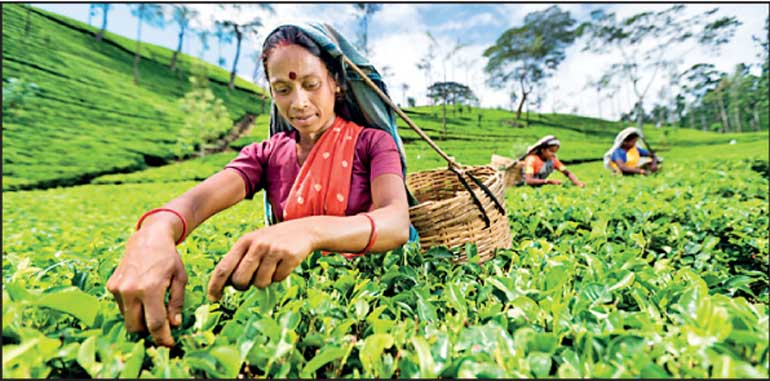Monday Apr 07, 2025
Monday Apr 07, 2025
Saturday, 17 June 2023 00:10 - - {{hitsCtrl.values.hits}}

Sri Lanka’s tea crop has begun to see a marginal improvement in volumes as a result of favourable weather conditions and availability of fertiliser.
In May, tea production increased by 1.58% year-on-year to 26.52 million kilos, but the first five months’ crop dipped by 1.54% compared to 2022 reflecting the struggle for revival after detrimental policy changes.
Data analysed by Forbes and Walker Research confirmed that in May, High Growns have shown a marginal increase, whilst the Medium Growns and Low Growns have shown a marginal decline in comparison with the corresponding period of 2022.
High-grown elevation produced 6.9 million kilos up by 9.43% YoY whilst, medium elevation production was 4.69 million kilos down by 0.5% YoY, and low-grown elevation crop was down by 1% to 14.69 million kilos. The production of green was at 208,724 kilos in May 2023, down by 6% YoY.
January-May 2023 cumulative production totalled 111.08 million kilos, registering a drop of 1.5% or vis-à-vis 112.82 million kilos YoY.
It also showed that compared to 2022, all elevations have shown negative variances during the period from January to May 2023.
High-grown elevation produced 25.8 million kilos down by 3.2% YoY whilst, medium elevation production was 18.01 million kilos down by 4.2% YoY and the low-grown elevation crop was marginally down by 0.10% to 66.2 million kilos. However, the green tea crop was up by 2.12% YoY at 1.01 million kilos.
In terms of category of production, May 2023 saw a positive outcome in comparison with the corresponding month of 2022. Orthodox tea production in May was up by 1.1% YoY to 23.73 million kilos, whilst CTC was up by 6.6% YoY to 2.58 million kilos.
As per data analysed by Asia Siyaka, it noted that since March 2023, tea production has seen a growth and is expecting the trend to continue through the rest of the year.
Industry growers had said that some estates were cut off from fertilisers for up to 18 months and they warned that it had a detrimental impact on crop production. In addition, the cost of production of tea growers has steeply risen by around 30% amidst the foreign exchange crisis.
As per the Sri Lanka Tea Board, the country’s total national production for the year 2022 was 251.50 million kilos compared with 299.49 million kilos in 2021. This was the lowest in 26 years when 246 million kilos were produced in 1995.
Sri Lanka expects tea production to recover in 2023 to 300 million kilos, whilst targeting export earnings of $ 1.5 billion for the year.
Discover Kapruka, the leading online shopping platform in Sri Lanka, where you can conveniently send Gifts and Flowers to your loved ones for any event including Valentine ’s Day. Explore a wide range of popular Shopping Categories on Kapruka, including Toys, Groceries, Electronics, Birthday Cakes, Fruits, Chocolates, Flower Bouquets, Clothing, Watches, Lingerie, Gift Sets and Jewellery. Also if you’re interested in selling with Kapruka, Partner Central by Kapruka is the best solution to start with. Moreover, through Kapruka Global Shop, you can also enjoy the convenience of purchasing products from renowned platforms like Amazon and eBay and have them delivered to Sri Lanka.
Discover Kapruka, the leading online shopping platform in Sri Lanka, where you can conveniently send Gifts and Flowers to your loved ones for any event including Valentine ’s Day. Explore a wide range of popular Shopping Categories on Kapruka, including Toys, Groceries, Electronics, Birthday Cakes, Fruits, Chocolates, Flower Bouquets, Clothing, Watches, Lingerie, Gift Sets and Jewellery. Also if you’re interested in selling with Kapruka, Partner Central by Kapruka is the best solution to start with. Moreover, through Kapruka Global Shop, you can also enjoy the convenience of purchasing products from renowned platforms like Amazon and eBay and have them delivered to Sri Lanka.